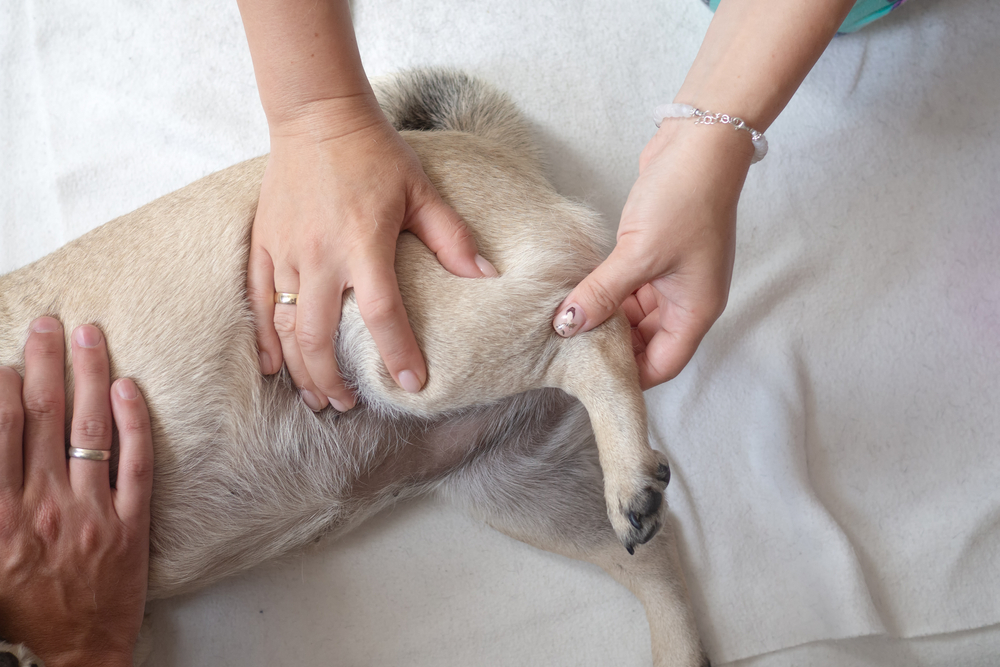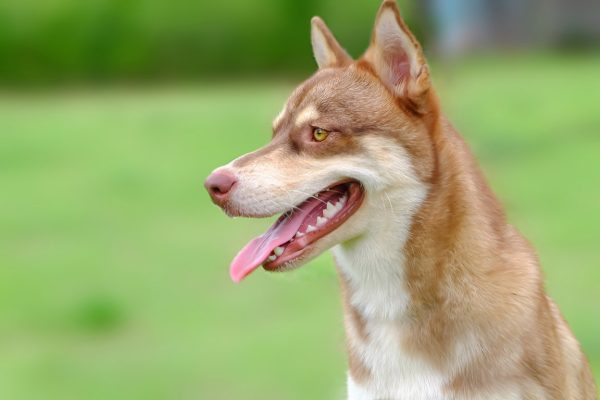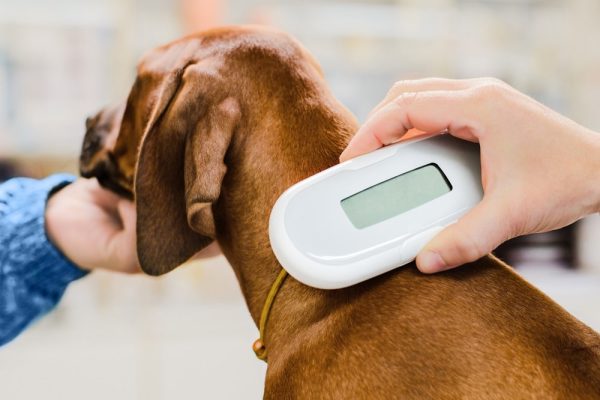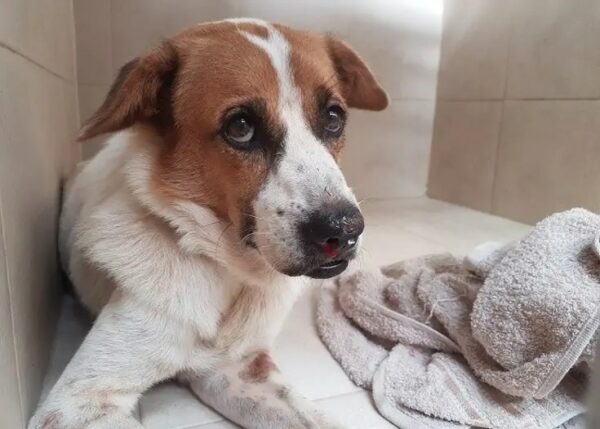The sciatic nerve is a large nerve in our legs and, similarly, is present in the canine hindlimb. You might be familiar with it, especially if you have experienced sciatica, which tends to give humans a lot of trouble. Sciatica causes nerve pain that shoots from your rear down your leg, which is the path of the sciatic nerve.
Dogs can also have issues with the sciatic nerve. Typically, a sciatic nerve injury is associated with trauma. However, diseases and even veterinary treatment can lead to problems with the sciatic nerve, which can lead to pain, weakness, paralysis, or lack of sensation in the hindlimb.

What Is Sciatic Nerve Injury?
Think of nerves as wires that travel around the body. Where there is a break in the wire, the conduction of electric signals will be reduced or blocked, depending on how complete the break is. However, circuits that don’t involve the damaged part will function normally.
When we want to move, the brain generates a signal that is sent down to the spinal cord through the relevant nerves to the necessary muscles. Nerves also send sensory signals back to the brain. In dogs, the sciatic nerve arises from the section of the spinal cord in the lower back. It then travels backward, looping behind the hip before coursing down the leg behind the femur and knee before dividing into two branches: the tibial and fibular (peroneal) nerves.
The sciatic nerve is responsible for the movement of many muscles in the hindlimb. It also picks up sensory signals like touch and pain and sends this information to the brain. Thus, a sciatic nerve injury will cause problems with sensation or muscle activity “downstream” of the problem. The exact signs depend on what caused the injury and its severity.
- Neuritis: Inflammation of a nerve that causes pain.
- Neurapraxia: Temporary nerve dysfunction with no structural damage. Typically lasting days to weeks, but in some cases persisting for months.
- Axonotmesis: The nerve sheath surrounding the nerve is intact, but some nerve cells are damaged. The prognosis for return to function is variable in this case.
- Neurotmesis: The nerve is completely severed. This carries the poorest prognosis.
What Are the Signs of Sciatic Nerve Injury?
Sciatic nerve injury can occur in dogs of either sex at any age. Most of the time, only one leg is affected. Dogs show signs of nerve dysfunction, which vary depending on the part of the nerve affected. Generally, owners will notice their dog limping and the muscles of the hindleg start to waste, but we can be more specific about that.
When one branch of the sciatic nerve, the tibial nerve, is affected, dogs show the following signs:
- Dropped hock joint
- Reduced sensation at the back of the leg and underneath the paw
- Knuckling of the paw
- Abnormal extension of the hock and inability to flex the hock
- Reduced sensation on top of the paw and the front and sides of the leg
If the injury is in the sciatic nerve before it branches, you will notice all of the above signs. A problem higher up in the nerve could prevent the dog from bending the knee.
Your pet may also show signs related to the cause of the injury, including:
- Pain
- Not wanting to eat
- Swelling
- Lethargy


What Are the Causes of Sciatic Nerve Injury?
There are numerous causes of sciatic nerve problems, but since a sciatic nerve injury implies an external cause rather than any disease, we will start with them.
Sciatic nerve injuries are commonly iatrogenic, meaning they are a complication of veterinary treatment, with surgery being the most common cause. The kinds of procedures that can cause a sciatic nerve injury include:
- Intramuscular injections in the hind leg
- Surgical repair of femur and pelvic fractures
- Hip replacement
- Double/ triple pelvic osteotomy
- Tibial plateau leveling osteotomy (TPLO)
Sciatic nerve injuries can also result from trauma, such as:
- Falls
- Road traffic accidents
- Animal attacks
- Crushing injuries
- Being impaled
Finally, certain diseases can damage or inflame the sciatic nerve. Abnormal bleeding or blood clots in the hindlimb can cause a loss of blood supply to the nerve and neurapraxia. Tumors arising from the nerves can also cause pain and signs of nerve dysfunction.
Nerve sheath tumors are common in older dogs and, unfortunately, carry a poor long-term prognosis even with treatment. Lumbosacral disease in dogs causes nerve pain and can lead to neuritis in the sciatic nerve.
Middle-aged to older large-breed dogs are more likely to have this condition. It occurs when the channels where the nerves exit the spine are narrowed. Typically, this is due to arthritic changes in the spine. The disease is painful, so your dog may yelp when touched, dislike the tail being lifted, or rise slowly.


Diagnosing Sciatic Nerve Injury in Your Dog
You should schedule a consultation with your vet if you notice signs of sciatic nerve injury. A sciatic nerve injury may be suspected based on your dog’s history as well as the results of a neurological examination. Your vet will observe your dog’s gait and palpate it for any areas of pain or swelling, as well as test their sensation and reflexes.
Based on your dog’s circumstances, your vet may recommend some initial diagnostic tests. For example, X-rays can look for bony changes such as fractures or spinal arthritis that could be causing your dog’s issues. Ultrasounds can also be performed, which can be used to view changes in the nerves as well as look for potential foreign bodies and tumors. In some cases, more advanced imaging like MRI can be needed to diagnose the issue.
A referral to a specialist is needed to diagnose a nerve problem, such as a lack of nerve firing. Generally, a veterinary neurologist will perform special tests on nerves while the dog is under general anesthesia. These tests are called electrodiagnostic studies, and they measure the electrical activity in nerves.
These studies can be particularly useful in determining the location and severity of the nerve injury and the prognosis for your dog. For example, with neurapraxia, there can be a clinical neurological deficit, but electrical stimulation is usually normal, revealing a good prognosis.

How Do I Care for a Dog With Sciatic Nerve Injury
You should speak with your vet about a specific treatment plan for your dog.
Did you know you can speak to a veterinarian without having to travel? Just head over to PangoVet. It's our online service where you can talk to a vet online and get the advice you need for your pet — all at an affordable price!

We have a few tips that can help you care for your dog at home and speed up their recovery, but which ones are appropriate will depend on your individual case. A treatment plan could include:
- Time and rest: Luckily, the nerves outside the brain and spinal cord can regenerate! Your dog’s nerve deficits may improve with time if the nerve hasn’t been completely severed. If the nerve sheath is unharmed, there is a chance of recovery. Less distance between the muscles and the nerve damage holds a better prognosis as it’s easier for the nerves to make contact. It can take days to months for things to improve, but with the proper testing, your vet should be able to give you a rough idea of what to expect.
- Pain relief medication: Medications like nonsteroidal anti-inflammatories and gabapentin can help relieve the pain from the injury or disease, as well as any nerve pain that occurs. Animals that experience pins and needles in the region can start gnawing on their leg and hurt themselves. Pain relief helps prevent this, but you should also monitor your pet and contact your vet if they are self-mutilating.
- Physical therapy: Physical therapy can be helpful to reduce contractures in cases of injury and maintain muscle mass. In the initial days after the injury, passive range of motion (PROM) exercises can be helpful. The right therapy can improve mobility. Home exercises for balance and weight bearing, like obstacle courses, walking uphills/sideways/backward, and shifting weight onto different legs, help develop muscles that can compensate for the nerve deficit. Laser therapy and hydrotherapy are also options. For these, you will need to visit a veterinary physiotherapist, which can be helpful anyway for an exercise plan for your dog. The use of a therapeutic laser along the nerve can help nerve recovery, based on studies in rats. Hydrotherapy is done on an underwater treadmill; after a treadmill session, dogs can have a therapeutic massage from the jets.
- Tarsal joint orthosis: This apparatus helps strap the hock joint and stabilize it, making it easier for your dog to walk. It stops your dog from dragging their legs, which can result in skin lesions and infection.
- Surgery: If there is a fracture, trapped nerve, or other surgical problem, timely surgery can improve your dog’s chances. If the nerve impairment doesn’t improve, salvage procedures like fusing the joints or amputating the leg can improve your dog’s quality of life. Therapies like nerve grafts are common in humans, and while not the norm in dogs, one study showed that a nerve graft was used successfully to treat canine sciatic nerve injury.


Frequently Asked Questions
How Can a Sciatic Nerve Injury Be Prevented?
Not all cases of sciatic nerve injuries can be prevented. However, you can minimize the risk of traumatic injuries by keeping your dog safe at all times. This means having a secure, fenced-in yard and keeping them on a leash when outside to avoid accidents. Repetitive high-impact exercises like agility and fetch can make dogs prone to sciatic neuritis.
Do Dogs With Sciatic Nerve Injuries Need to Be Euthanized?
Generally, dogs with a sciatic nerve injury do not need to be euthanized, but in some cases, it can be a kind option. Studies show that if your dog can flex and extend their hock joint, the nerve damage is likely to improve.
Regardless of your dog’s recovery, they can have a good quality of life in many cases. Healthy dogs with traumatic nerve injuries that do not resolve can do very well with salvage procedures or physiotherapy treatment, as these prevent the leg from becoming a bother to them. Then again, dogs with other mobility problems may not cope well. Also, if the nerve injury is due to a severe underlying disease, like cancer, the long-term prognosis is poor.

Conclusion
If your dog has sciatic nerve damage, it’s most likely from trauma or surgery, although other conditions can cause sciatic nerve problems. Your vet can discuss the prognosis and options for your dog, but the ability of the sciatic nerve to regenerate means that many dogs improve within weeks or months of a moderate injury. While other dogs may never be completely normal, most can experience a good quality of life with the right treatments, and they don’t let the nerve damage slow them down!
Featured Image Credit: msgrafixx, Shutterstock


















